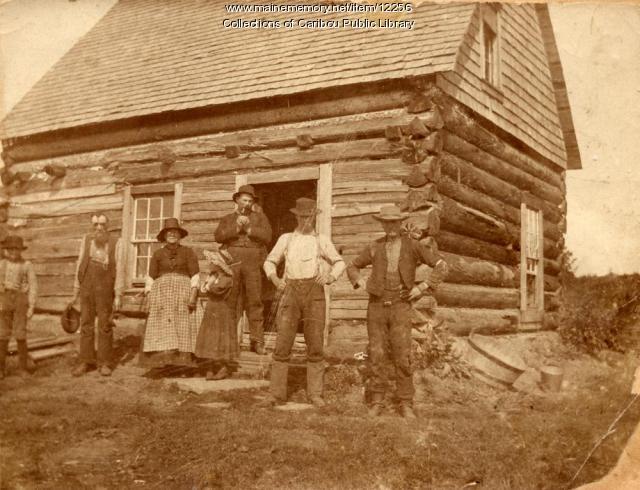Keywords: near
Item 17559
Contributed by: An individual through Maine Historical Society Date: 1909 Media: Photographic print
Item 13326
Contributed by: Aroostook County Historical and Art Museum Date: circa 1890 Location: Hope Media: Photographic print
Item 87480
Frothingham property, Near Twin Beach, Long Island, Portland, 1924
Owner in 1924: Frothingham Use: Summer Dwelling
Item 88568
Jones property, Near Church Avenue, Peaks Island, Portland, 1924
Owner in 1924: Alice E. Jones Use: Dwelling
Item 111479
Sarajo Gallery floor plan and section, New York, NY, 2016
Contributed by: Maine Historical Society Date: 2016 Location: New York Clients: Yosi Barzilai; Grant Lindsey Architect: Carol A. Wilson; Carol A. Wilson, Architect
Item 111589
George B. Morrill house, Portland, 1904-1919
Contributed by: Maine Historical Society Date: 1904–1919 Location: Portland Client: George B. Morrill Architect: John Calvin Stevens and John Howard Stevens Architects
Exhibit
A Town Is Born: South Bristol, 1915
After being part of the town of Bristol for nearly 150 years, residents of South Bristol determined that their interests would be better served by becoming a separate town and they broke away from the large community of Bristol.
Exhibit
St-Jean-Baptiste Day -- June 24th -- in Lewiston-Auburn was a very public display of ethnic pride for nearly a century. Since about 1830, French Canadians had used St. John the Baptist's birthdate as a demonstration of French-Canadian nationalism.
Site Page
Blue Hill, Maine - SS Panatoset, Blue Hill, 1907
"… Description SS Panatoset yacht in 1907 near Blue Hill. View additional information about this item on the Maine Memory Network."
Site Page
Mount Desert Island: Shaped by Nature - MDI and the Fire of 1947
"The Depression had taken its toll and many of the summer homes were never rebuilt. Remnants of these early homes can still be seen near Bar Harbor."
Story
Saga of a Sub Chaser S.C. 268 along Maine Coast
by DANIEL R CHRISTOPHER
A look back at a Sub Chaser Crew on duty along the Maine coastline near the end of World War I
Story
Crystal Priest - Genesis of 1:1 in Guilford
by MLTI Stories of Impact Project
Crystal Priest recounted the genesis of 1:1 near the geographical center of the state--Guilford.
Lesson Plan
Grade Level: 9-12
Content Area: English Language Arts, Social Studies
Most if not all of us have or will need to work in the American marketplace for at least six decades of our lives. There's a saying that I remember a superintendent telling a group of graduating high-school seniors: remember, when you are on your deathbed, you will not be saying that you wish you had spent more time "at the office." But Americans do spend a lot more time working each year than nearly any other people on the planet. By the end of our careers, many of us will have spent more time with our co-workers than with our families.
Already in the 21st century, much has been written about the "Wal-Martization" of the American workplace, about how, despite rocketing profits, corporations such as Wal-Mart overwork and underpay their employees, how workers' wages have remained stagnant since the 1970s, while the costs of college education and health insurance have risen out of reach for many citizens. It's become a cliché to say that the gap between the "haves" and the "have nots" is widening to an alarming degree. In his book Wealth and Democracy, Kevin Phillips says we are dangerously close to becoming a plutocracy in which one dollar equals one vote.
Such clashes between employers and employees, and between our rhetoric of equality of opportunity and the reality of our working lives, are not new in America. With the onset of the industrial revolution in the first half of the nineteenth century, many workers were displaced from their traditional means of employment, as the country shifted from a farm-based, agrarian economy toward an urban, manufacturing-centered one. In cities such as New York, groups of "workingmen" (early manifestations of unions) protested, sometimes violently, unsatisfactory labor conditions. Labor unions remain a controversial political presence in America today.
Longfellow and Whitman both wrote with sympathy about the American worker, although their respective portraits are strikingly different, and worth juxtaposing. Longfellow's poem "The Village Blacksmith" is one of his most famous and beloved visions: in this poem, one blacksmith epitomizes characteristics and values which many of Longfellow's readers, then and now, revere as "American" traits. Whitman's canto (a section of a long poem) 15 from "Song of Myself," however, presents many different "identities" of the American worker, representing the entire social spectrum, from the crew of a fish smack to the president (I must add that Whitman's entire "Song of Myself" is actually 52 cantos in length).
I do not pretend to offer these single texts as all-encompassing of the respective poets' ideas about workers, but these poems offer a starting place for comparison and contrast. We know that Longfellow was the most popular American poet of the nineteenth century, just as we know that Whitman came to be one of the most controversial. Read more widely in the work of both poets and decide for yourselves which poet speaks to you more meaningfully and why.


















